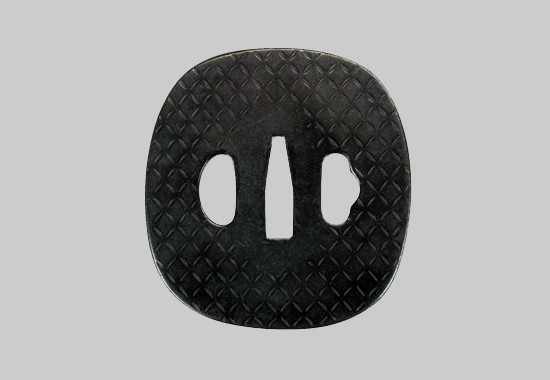

More informations about this product
Tsuba Naga Maru Gata (oval) shaped with geometric pattern of the '7 treasures' of Bouddhism.
Kaku gata shape (square with rounded corners), Kaku/maru mimi gata border (rounded square edge), with Kozuka and Kogai Ana.
The tsuba Shichiho 七宝 (or Shippo) refers to the 7 Buddhist treasures, the 7 spiritual values allowing the individual to reach "Awakening".
These 7 treasures are belief (Gold), virtue (Silver), conscience (Lapis lazuli), altruism (Crystal), listening (Pearl), generosity (Coral), wisdom (Agate).
The Shichiho motif dates from the beginning of the Nara period (710-794). Its first appearance in Japan is on fabrics and a mirror (Kagami) preserved in the Shousouin 正倉院 deposit in Nara. It is later found in carved gold kirikane 切金 motifs in Buddhist images from the Heian period. It was then forgotten for centuries. It was not until the Keicho period (1596-1615), Musashi's period, that this motif was rediscovered and reused by an artist, Hirata Donin, who became an imperial craftsman under Tokugawa Ieyasu.
In the Edo period, it was used on porcelain, metal objects, woodwork and lacquer, often in combination with other motifs. It was also popular on women's kimonos 着物.
Beyond the motif, Shippo is also a technique of ornamentation called 'cloisonné'. This technique consists of isolating different shades or materials with gold thread or other noble materials. During the Edo period, this technique became a specialty of Aichi Prefecture, in Owari Province, southeast of Nagoya.
Share your opinion
error Your review appreciation cannot be sent
feedback Report comment
check_circle Report sent
error Your report cannot be sent